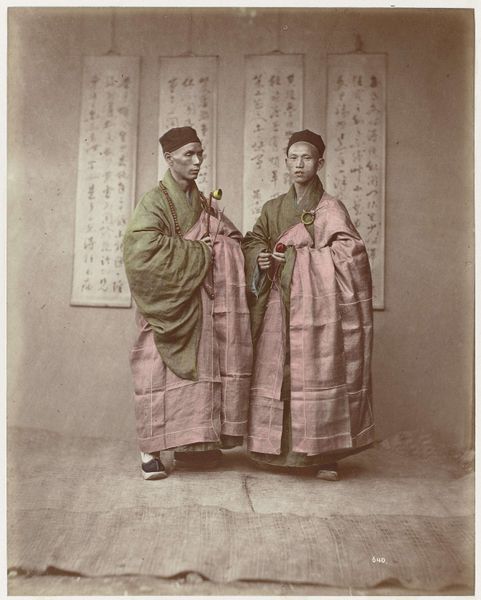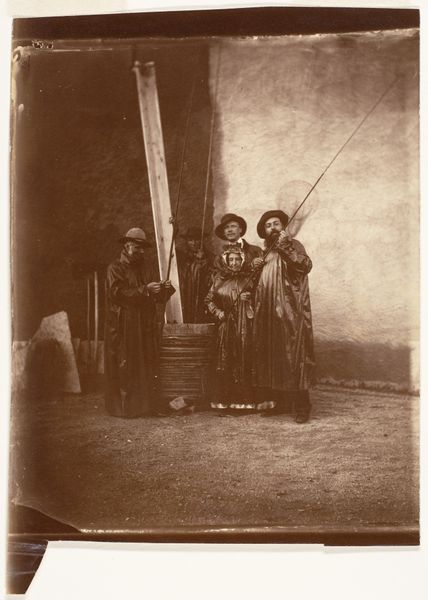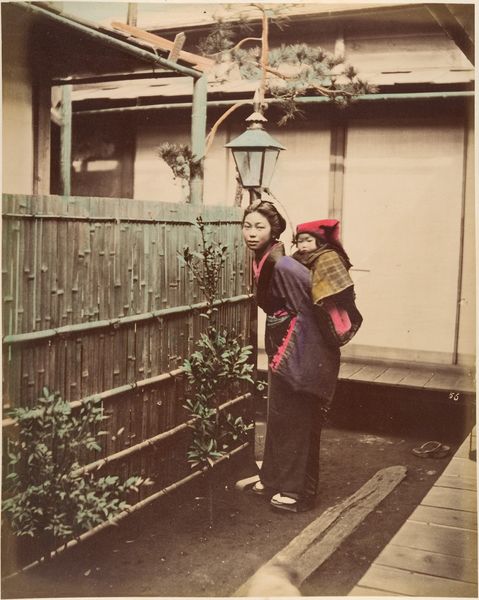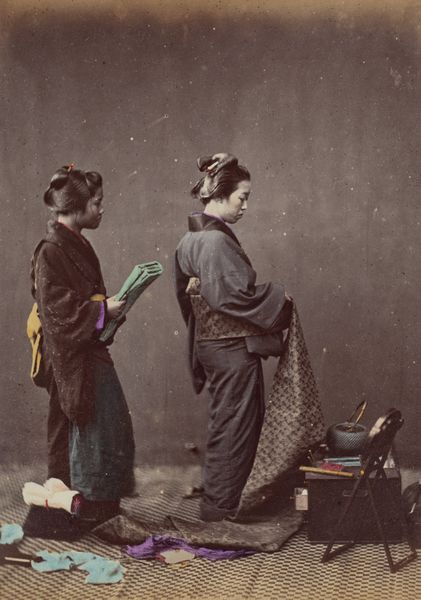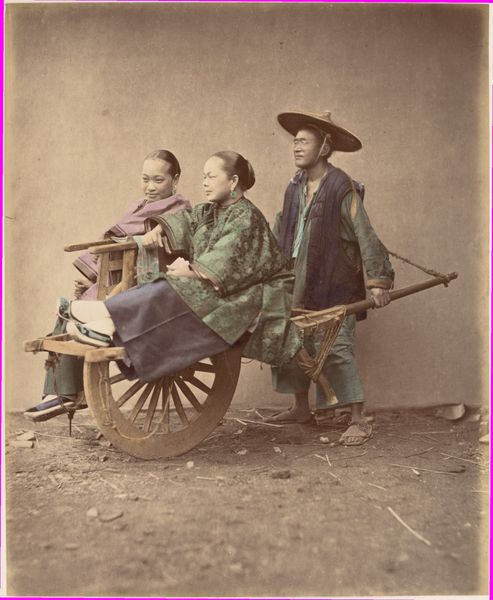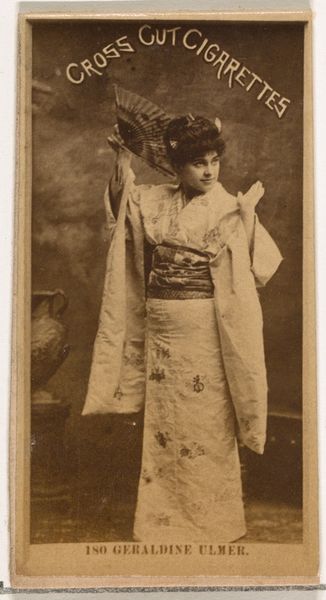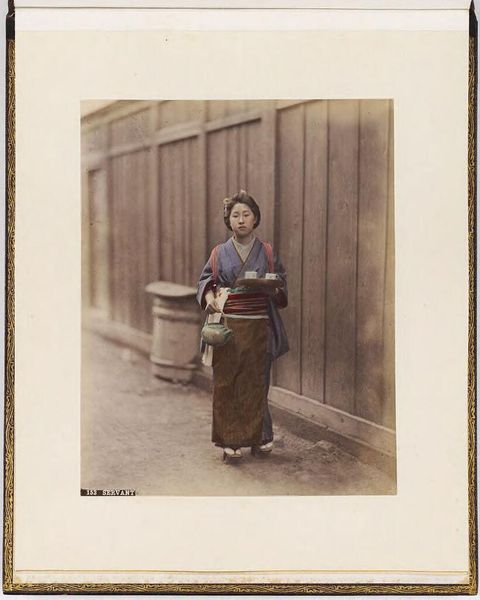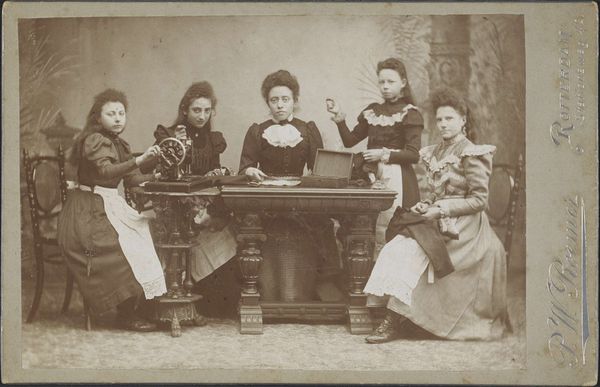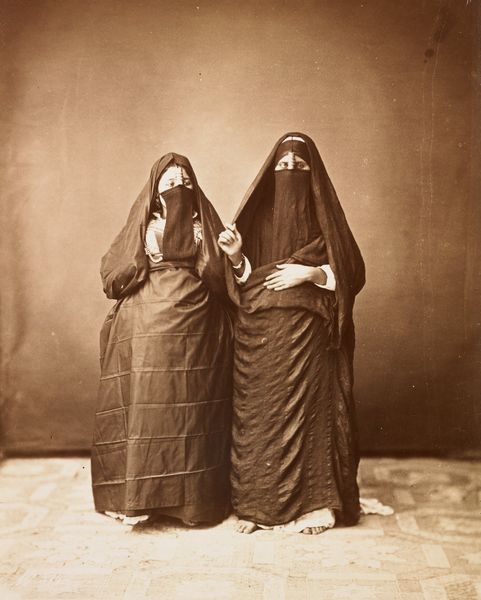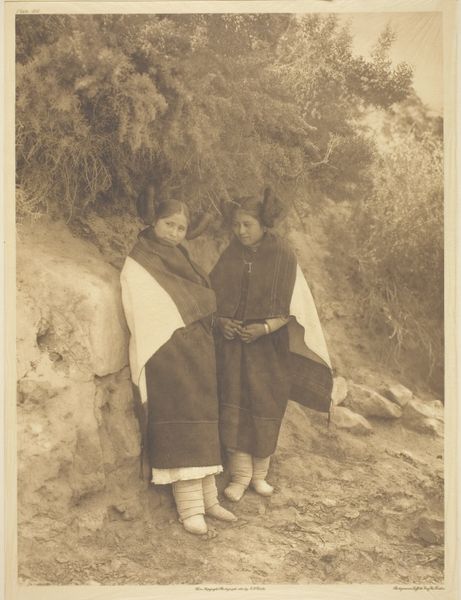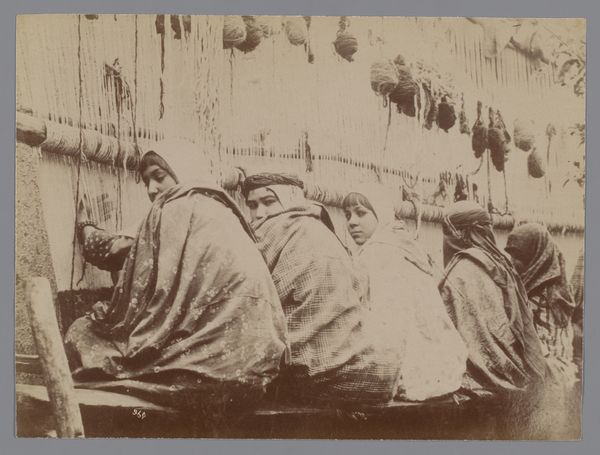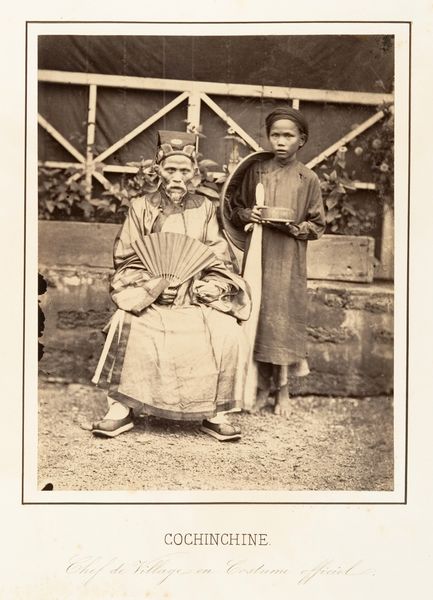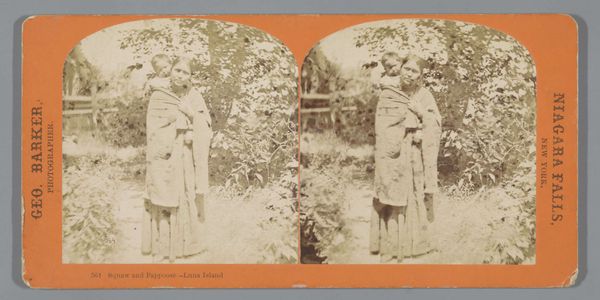
gelatin-silver-print, print, photography, gelatin-silver-print
#
portrait
#
gelatin-silver-print
#
film photography
# print
#
asian-art
#
colourisation
#
archive photography
#
photography
#
historical photography
#
gelatin-silver-print
Dimensions: 9 x 13 x 1 1/2in. (22.9 x 33 x 3.8cm)
Copyright: Public Domain
Editor: Here we have an anonymous photograph album dating from the 19th to the 20th century. It’s a gelatin silver print, and I’m struck by the way it captures what appears to be a double "cangue." What exactly am I seeing here? Curator: This photograph confronts us with a stark image of punishment and social control in a specific historical context. The "cangue," that heavy wooden frame around their necks, was a form of public humiliation and restraint, primarily used in China. Consider the power dynamics at play: Who held the authority to inflict this punishment, and why? What does this image tell us about gender roles and societal expectations of the time? Editor: It's such a visceral image. Were photographs like this meant to be documentary, or something else? Curator: That's a crucial question. While ostensibly documentary, these images were often produced and circulated within a colonial framework. How does the act of photographing this scene, and then presenting it for consumption by a Western audience, perpetuate or challenge existing power structures and racist ideas? Who is benefitting from its distribution and sale? It's vital to understand who is behind the camera. What ethical considerations are raised when depicting such scenes of suffering? Editor: So it's not just about what’s in the image, but who is showing it and why? Curator: Precisely. The photograph, seemingly straightforward, becomes a site of complex negotiations of power, representation, and cultural exchange. By questioning the photographer's intent and the photograph's reception, we can unpack the historical and ideological baggage embedded within. Editor: This really changes my understanding of photography and its role in history. It makes me realize how much context matters. Curator: Exactly, and hopefully encourages you to seek out and consider a range of voices when constructing narratives about historical moments, shifting the focus toward understanding how identity, politics and visuality shape our understandings of each other and the world.
Comments
No comments
Be the first to comment and join the conversation on the ultimate creative platform.
